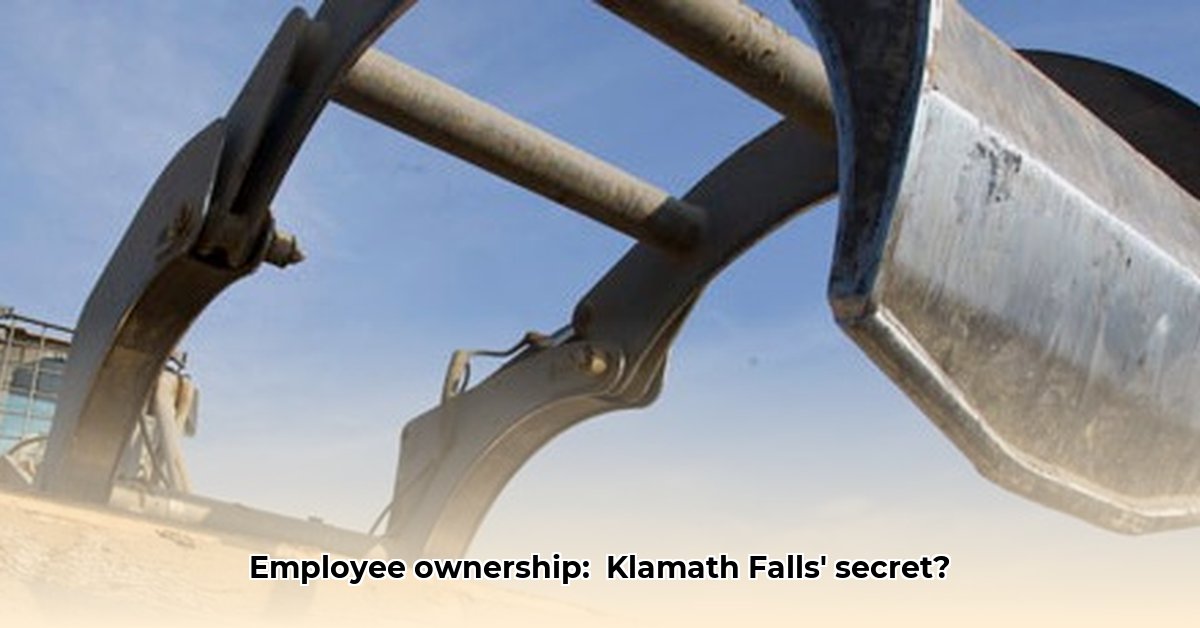
Columbia Forest Products (CFP) in Klamath Falls, Oregon, stands as a compelling case study in sustainable business practices and the transformative power of employee ownership. This article explores the interplay between CFP's commitment to environmental responsibility and its unique employee stock ownership plan (ESOP), examining both its triumphs and challenges. We will analyze how this innovative approach has fostered employee engagement, resilience in the face of market fluctuations, and a long-term vision for growth.
A History Rooted in Sustainability and Innovation
CFP's journey is a testament to adaptation and foresight. Established decades ago as a traditional lumber mill, the company gradually evolved its operational model, recognizing the vital link between environmental stewardship and long-term business success. This evolution culminated in the adoption of an ESOP, a bold strategic move that fundamentally redefined the relationship between the company and its workforce. The transition wasn't a sudden shift, but rather a carefully considered evolution reflecting a deep-seated commitment to both environmental responsibility and employee empowerment.
Sustainable Practices: More Than Just a Commitment
CFP's dedication to sustainability extends beyond mere compliance; it's woven into the very fabric of the company's operations. While precise quantitative data on their environmental impact may be limited, their unwavering commitment to responsible forestry practices, waste reduction, and operational efficiency is evident. This commitment transcends the pursuit of short-term cost savings, reflecting a long-term vision for a healthy environment and a thriving community. Their commitment to responsible logging and sustainable forest management practices showcase a deep understanding that environmental health is inextricably linked to business prosperity.
The ESOP: A Foundation for Employee Engagement and Ownership
At the heart of CFP's success lies its ESOP. This isn't merely a stock distribution program; it's a paradigm shift that transforms employees from passive workers into active owners, profoundly influencing their engagement and dedication. Instead of simply fulfilling job requirements, employees become stakeholders deeply invested in the company's success and long-term sustainability. This model fosters a stronger sense of ownership, leading to increased employee retention, shared responsibility, and a collective commitment to the company's well-being. This shared ownership model has fostered a unique company culture where success is celebrated collectively.
"The ESOP isn't just about the financial benefits," says Kevin Crisp, a 30-year veteran at CFP, "it's about feeling a true sense of ownership and pride in the work we do." This sentiment underscores the transformative power of the ESOP in creating a deeply engaged and loyal workforce.
Navigating the Challenges: Market Fluctuations and Risk Mitigation
While the ESOP offers significant advantages, it's not without its inherent risks. The lumber industry is inherently cyclical, subject to market fluctuations that directly affect the value of employee-owned shares. This introduces a degree of financial vulnerability for employees, necessitating a proactive approach to risk management. CFP’s history demonstrates resilience in the face of economic downturns, but consistent vigilance and adaptive strategies are crucial for navigating such uncertainties. This continuous adaptation highlights the importance of transparent communication and robust financial planning in maintaining long-term stability within the ESOP structure.
Analysis and Discussion: The Synergistic Relationship Between Sustainability and Employee Ownership
CFP's experience demonstrates a powerful synergy between its commitment to sustainability and its employee ownership model. The shared ownership structure fosters a deeper commitment to responsible practices, as employees directly benefit from the long-term success of a sustainable business model. This alignment of individual and collective interests creates a powerful incentive for environmental stewardship, ensuring that sustainability goals are not simply corporate pronouncements but integral aspects of the company's daily operations. This shared responsibility for both environmental and financial success strengthens the overall resilience of the organization.
Does this model offer a replicable template for other businesses? The answer is nuanced. While not every company can directly transplant CFP’s model, the core principles—a deep commitment to sustainability coupled with employee empowerment—are readily transferable. The key lies in fostering a company culture that prioritizes both environmental and worker well-being. This requires long-term strategic planning, a focus on transparency, and a willingness to challenge traditional business paradigms.
Conclusion: A Model for Sustainable Growth and Employee Empowerment
Columbia Forest Products’ journey showcases the potential for a harmonious integration of sustainable practices and employee ownership. Their model fosters a deeply engaged workforce, a strong commitment to environmental responsibility, and a remarkable capacity to navigate economic uncertainties. While challenges exist, CFP's success underscores the potential for this innovative approach to create a more sustainable and equitable business landscape. This unique model serves as a valuable case study, inspiring further exploration of its principles and adaptability across various industries. The company's ongoing success will continue to offer valuable insights and lessons for businesses seeking a more sustainable and employee-centric future.